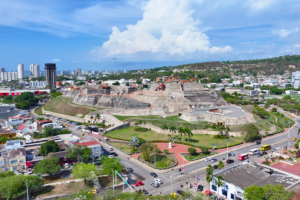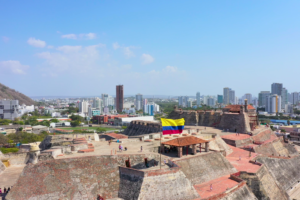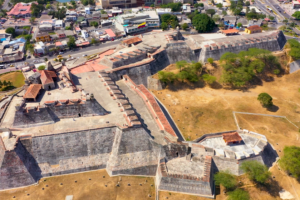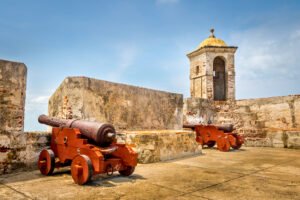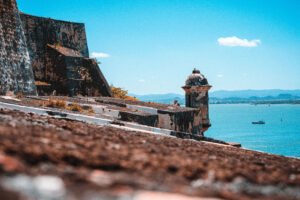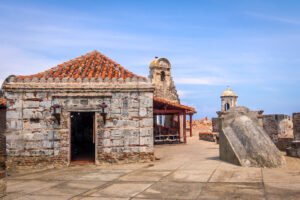Castillo San Felipe de Barajas rises above Cartagena like a weathered sentry, keeping watch over the city and sea. Climbing its ramparts, you can feel the heat and hear the echoes of footsteps in the old stone tunnels. The fort’s massive walls and strategic hilltop views make it clear why it was once considered unconquerable. It’s easy to lose track of time exploring its maze of passageways and wide, breezy terraces.
Quick Facts
📍 Location: Cartagena, Colombia
🏗️ Construction Period: 1536 (with major expansions in 1657 and 1762)
🏰 Architectural Style: Colonial Spanish Military Architecture
🎭 Famous For: Withstanding the 1741 British siege, secret tunnels, never being conquered
👑 Notable Residents: Blas de Lezo, Admiral Edward Vernon, Pedro Zapata de Mendoza
🏆 UNESCO Status: Yes, part of the Historic Walled City of Cartagena (1984 designation)
🌐 Official Website: https://fortificacionescartagena.com.co/en/
Gallery Photos
Visiting Information
🗓️ Best Time to Visit: Late December to early April
🗺️ Location Perks: Get sweeping panoramas of Cartagena’s old town and coastline from the highest battlements.
⏳ Estimated Visit Duration: Plan to spend 1–2 hours exploring the fort’s tunnels, towers, and panoramic viewpoints.
💡 Visiting tips: Take a flashlight or use your phone to explore the darkest tunnels safely.
Map
Related Articles
Historical Context
Cartagena’s Castillo San Felipe de Barajas has always been a part of the city’s daily rhythm. Old neighbors will tell you about slipping away from chores to race up the sun-baked ramps or hiding in the cool tunnels on hot days. Vendors have claimed the shade at the gates for as long as anyone can remember, setting up their stands where sentries once watched for sails on the horizon. There are stories of storms that rattled the walls and celebrations that spilled out onto the stone terraces at night. For some families, there’s pride in pointing to an ancestor who once worked on the fort’s endless repairs, or who simply grew up with its silhouette on the skyline. Even with visitors snapping photos every day, the fort is never just a museum—its stones hold the city’s energy, stubborn and full of memory.

